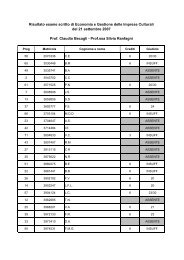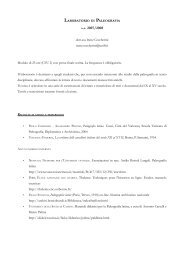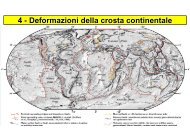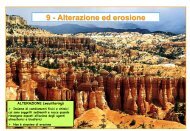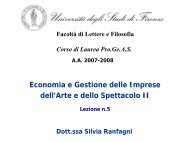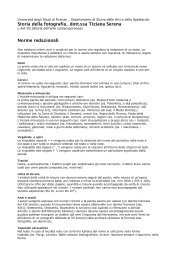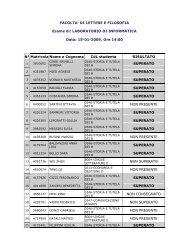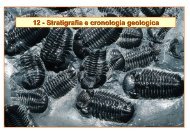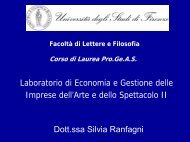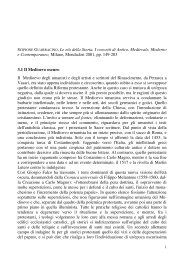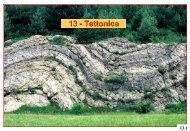Beyond Pragmatics. Morphosyntactic Development in Autism.pdf
Beyond Pragmatics. Morphosyntactic Development in Autism.pdf
Beyond Pragmatics. Morphosyntactic Development in Autism.pdf
You also want an ePaper? Increase the reach of your titles
YUMPU automatically turns print PDFs into web optimized ePapers that Google loves.
J <strong>Autism</strong> Dev Disord<br />
Fig. 1 Index of Productive<br />
Syntax (IPSyn) Subscale<br />
Scores Index of Productive<br />
Syntax scores by group. Only<br />
scores for participants who<br />
made the full 100 utterances<br />
were <strong>in</strong>cluded. Sample sizes<br />
for this analysis were: <strong>Autism</strong><br />
n = 12, DD n = 15, TD<br />
n =13<br />
which revealed a significant ma<strong>in</strong> effect of Group,<br />
F(2,35) = 5.71, p=.007 and a significant ma<strong>in</strong> effect of<br />
Subscale, F(3,105) = 2.80, p < .05. The Group · Subscale<br />
<strong>in</strong>teraction was not significant. Post hocs <strong>in</strong>dicated<br />
that the pattern of responses for the autism<br />
group was significantly different from the DD and TD<br />
groups, p=.05 and p=.002, respectively, and the<br />
latter two groups did not differ.<br />
Follow-up ANOVAs on the <strong>in</strong>dividual subscales<br />
yielded a significant group difference for the Noun<br />
Phrases, F(2,35) = 3.59, p=.04, and a trend for a difference<br />
with<strong>in</strong> the Questions and Negations subscale,<br />
F(2,38) = 3.11, p=.06. The Verb Phrases and Sentence<br />
Structures subscales did not differ across groups.<br />
The children with autism had response patterns that<br />
were significantly different than <strong>in</strong> the TD group for<br />
both the Questions-Negations, t (24) = 2.08, p < .05,<br />
and Noun Phrases subscales, t (23) = 2.76, p=.01.<br />
There was a trend for a group difference between the<br />
autism and DD groups for the Questions-Negations<br />
subscale, t (26) = 1.91, p=.07. The DD and TD<br />
groups did not differ. In summary, the developmental<br />
scatter analysis <strong>in</strong>dicates that the children with autism<br />
had response patterns for the IPSyn which differed<br />
significantly from responses <strong>in</strong> the comparison groups.<br />
Types and Tokens <strong>in</strong> Word Production. Receptive<br />
vocabulary (language comprehension) was assessed<br />
with the PPVT-III, on which all groups were similar. In<br />
the spoken language doma<strong>in</strong>, one common measure of<br />
spontaneous language use is the contrast between the<br />
sheer number of words, or tokens, spoken dur<strong>in</strong>g a<br />
specified period, and the number of different words, or<br />
types, produced <strong>in</strong> that same period. This is a way of<br />
quantify<strong>in</strong>g the variety of different words used by a<br />
talker, while equat<strong>in</strong>g for talkativeness. The Type to<br />
Token ratio was estimated us<strong>in</strong>g the FREQ rout<strong>in</strong>e<br />
with<strong>in</strong> CLAN. Results <strong>in</strong>dicated that children <strong>in</strong> all<br />
three groups produced similar numbers of Word<br />
Types, F(2, 45) = .093, p=.91, with means (SD) of 178<br />
(58) , 186 (47), and 186 (62), for the autism, DD, and<br />
TD groups, respectively. Children also produced similar<br />
total Tokens: 459 (181), 550 (183), and 532 (224),<br />
F(2, 45) = .96, p=.39. This supported the f<strong>in</strong>d<strong>in</strong>g<br />
(described <strong>in</strong> the IPSyn section) that children across<br />
groups were equally talkative. The effect of Group on<br />
the ratios of Types to Tokens did not reach significance,<br />
F(2, 45) = 2.47, p=.096. Because there was a<br />
trend for a group difference <strong>in</strong> the Type-Token ratio,<br />
post hoc analyses were conducted and <strong>in</strong>dicated that<br />
the autism group ratio was higher than <strong>in</strong> the DD<br />
group, t (30) = 2.22, p=.04, which suggests that the<br />
children with autism tended to produce a greater<br />
variety of different words than children <strong>in</strong> the DD<br />
group.<br />
Error Analysis<br />
Although groups differed with respect to the relative<br />
complexity of syntactic constructions, these differences<br />
might be mask<strong>in</strong>g differences <strong>in</strong> utterances that are<br />
produced with errors. The IPSyn assigns credit for<br />
produc<strong>in</strong>g a particular structure even if it is ungrammatical<br />
(e.g., credit for past tense is assigned if a child<br />
says, ‘‘they wented outside’’). When errors are produced,<br />
they may reflect an <strong>in</strong>complete or tentative<br />
grasp of the particular l<strong>in</strong>guistic structure. To assess<br />
whether group differences <strong>in</strong> syntactic complexity may<br />
have been <strong>in</strong>fluenced by ungrammatical speech, we<br />
123


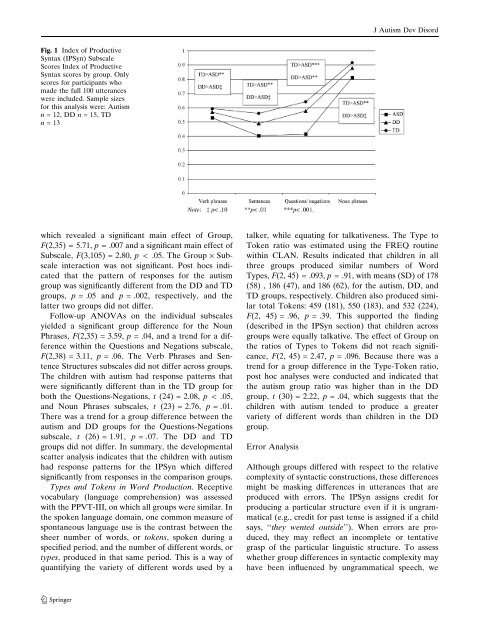
![PATROLOGIA GRECA E LATINA [Patrologiae cursus completus]. All ...](https://img.yumpu.com/50711133/1/184x260/patrologia-greca-e-latina-patrologiae-cursus-completus-all-.jpg?quality=85)
